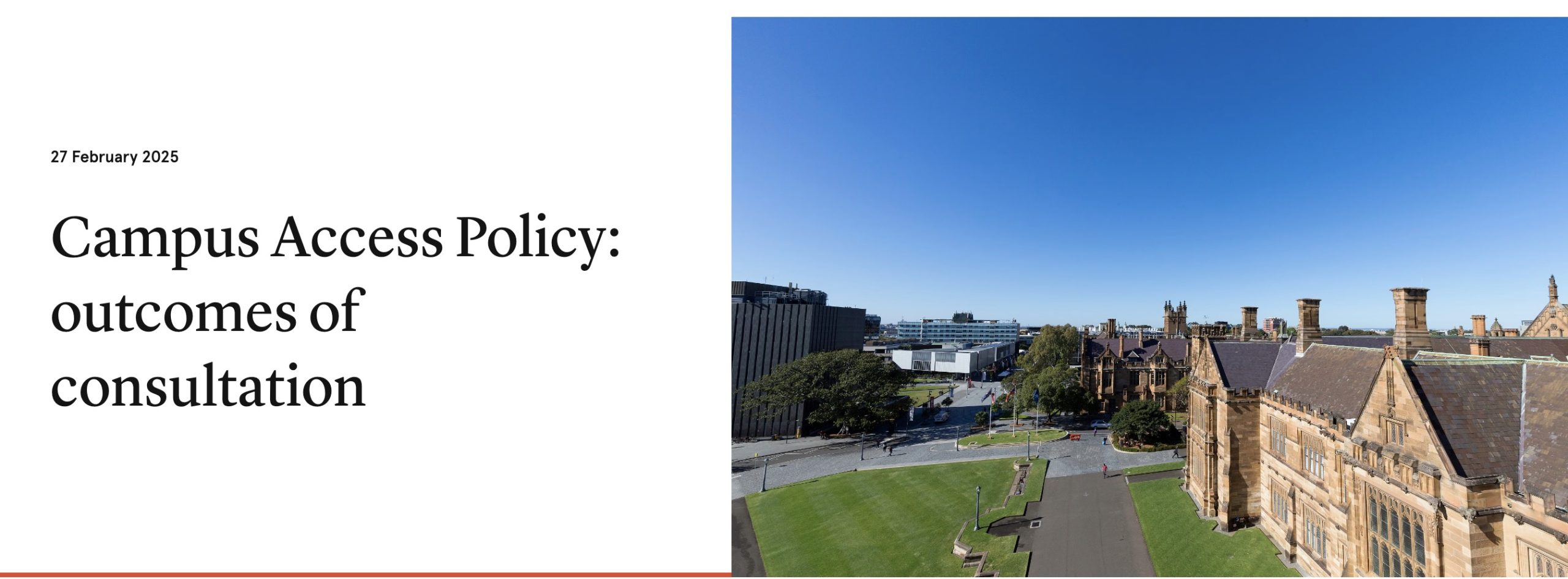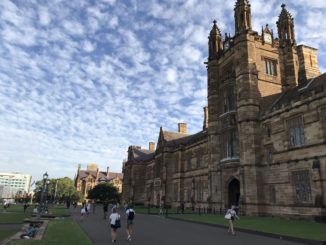

Background
In July 2024, the University of Sydney introduced the Campus Access Policy (CAP), which required demonstrators to provide 72 hours’ notice for protests, prohibited indoor demonstrations, and imposed restrictions on the use of megaphones and the erection of structures without prior approval. The academic and students have heavily criticised the policy for being too strict with campus protesters.
In March 2025, the University of Sydney issued statements clarifying that the international student would not be suspended for her protest action, then apologised for “error and any distress caused”.Luna, a transgender student from Malaysia,was informed being investigated for alleged misconduct in February, after she allegedly wrote messages accusing the university of complicity in genocide in Gaza on campus whiteboards.
Story Angle

This news commentary aims to examine the University of Sydney’s recent policy changes concerning campus protests and the adoption of the International Holocaust Remembrance Alliance (IHRA) definition of antisemitism urged by Labor MP Josh Burns. While these measures aim to maintain campus harmony, they risk suppressing legitimate student activism and open discourse, particularly on contentious issues like the Israel-Palestine conflict. The central argument is that these policies, though with positive purpose, may inadvertently compromise free speech and academic freedom.
Chosen publication and target user group
This article is intended for The Guardian Australia, it is an ideal platform for my news commentary on the universities’ protest policies. The publication’s audience comprises predominantly educated, progressive, and socially engaged readers, with a significant portion aged between 18 and 39. These readers are deeply interested in issues such as civil liberties, education policy, and social justice, making them highly receptive to discussions about student activism and free speech on university campuses.
Sources of information
Online sources:
- University regulations on in-campus protest like the University of Sydney’s Campus Access Policy, University of New South Wales’ Campus Policy
- Online official documents explaining terms including International Holocaust Remembrance Alliance (IHRA).
- Reports from various publications revolve around USYD’s policies as part of the quote.
Interview plans :
For core interviewees, I will select international students, staffs in student organizations like the Sydney University Postgraduate Representative Association (SUPRA). International students often face unique challenges, including visa dependencies and cultural barriers, which can amplify the impact of restrictive protest regulations. Engaging with these voices ensures a comprehensive understanding of how policy changes influence diverse student populations, particularly those who may feel marginalized or vulnerable within the university setting.
Ideas for multimedia, hypertext and interactivity
Multimedia Ideas:
- Photographs of campus protests or relevant university buildings.
- Screenshots of the Campus Access Policy highlighting key clauses.
Hypertext Links:
- Embed links to the Guardian articles and the university’s policy documents.
- Include links to statements from student organizations and human rights groups.
Interactivity:
- Using WorldPress’ WP Quiz or Poll feature: “Do you believe universities should have the authority to restrict on-campus protests?”
- Comment section inviting users to share their views on campus free speech.




Be the first to comment